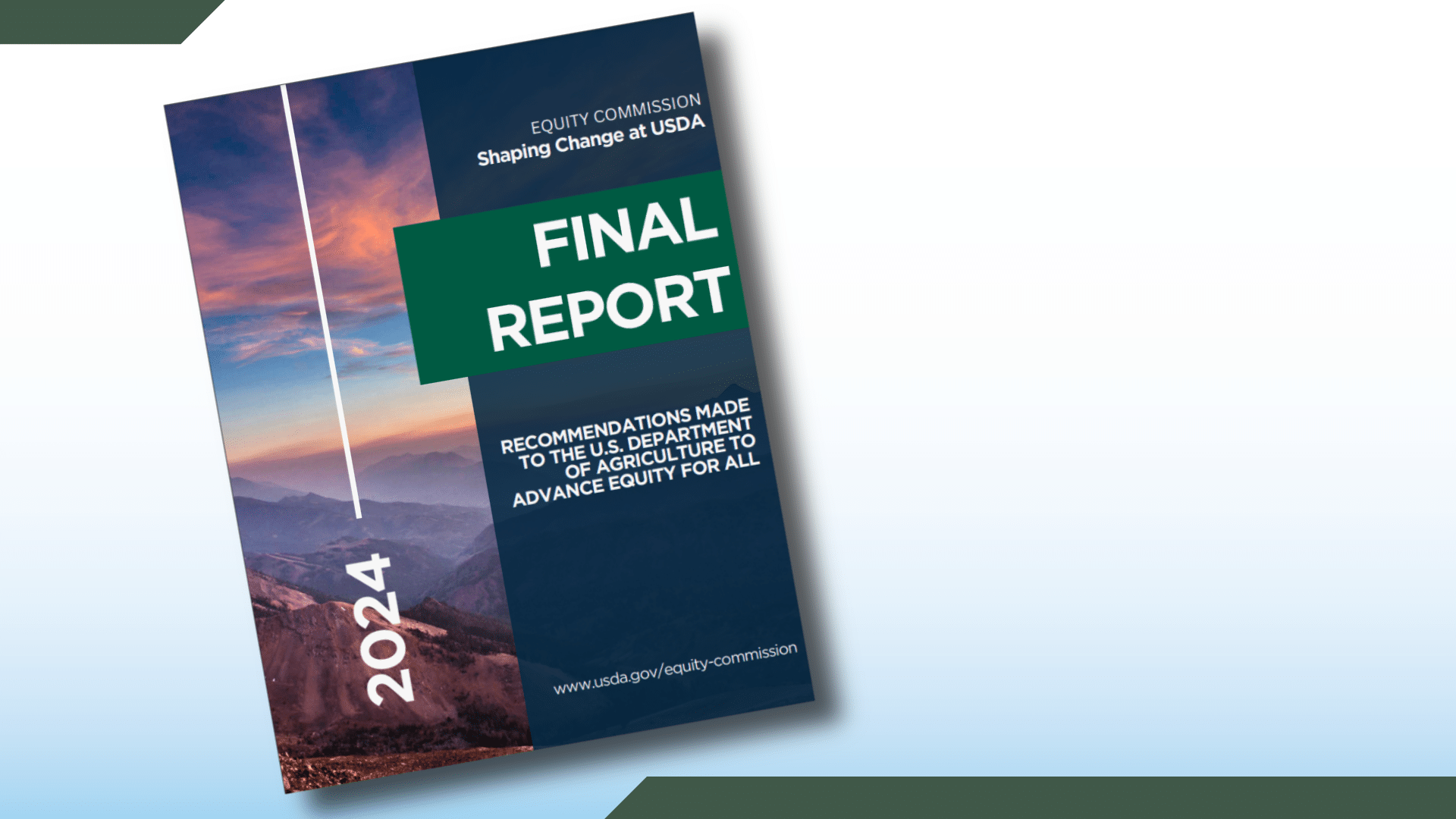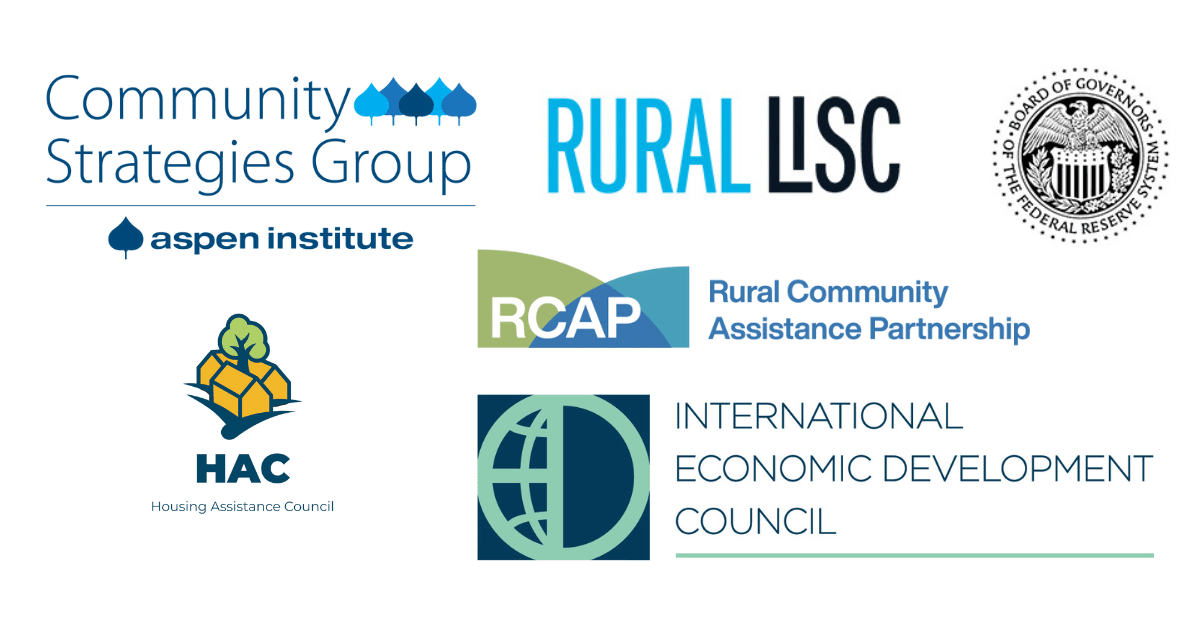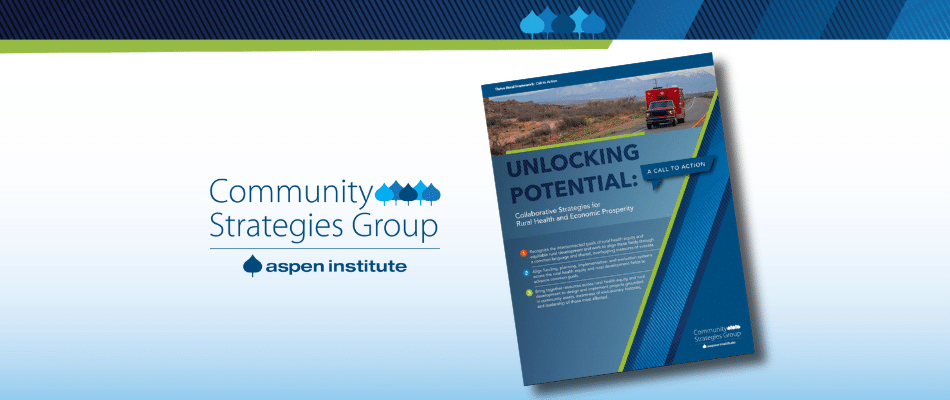Have you gotten a chance to review the USDA Equity Commission Report? Earlier this year, the USDA Equity Commission released its final report, which the USDA described as “a comprehensive guide for long-lasting change within USDA programs, policies, and procedures.” This comprehensive report explores nine recommendation areas for improving USDA’s services and provides a roadmap for positive systems change within the Department. Those areas include agency and department-wide changes to better support families, farmers, ranchers, farmworkers, and immigrants, as well as efforts to better support and strengthen rural communities.
The report recommendations were made through a multi-year process involving three commission panels, including one specifically focused on equity in rural community economic development.
We were thrilled to see so many experienced rural development leaders appointed to this commission, including several of Aspen CSG’s Rural Action Roundtable on Equity (RARE) members.
This blog shares the voices of several of the people who helped shape the report, including subcommittee members and USDA staff. We asked them to comment on the report and point to a particular part of the commission report that they think is very important and that folks like you should read and understand. We also highlight a few report recommendations the Aspen CSG team sees as crucial for equity across rural America and Native nations.
“The USDA’s Equity Commission is an important commitment by the Department to advance equity throughout all the processes, policies, personnel, and programs. The commission produced 66 actionable recommendations that addressed a variety of issues, including easing access to programs, producing and maintaining quality housing, increasing access to capital from underserved communities, supporting cooperatives, and enhancing public-private partnerships. The key now is for the Department, along with the support of relevant stakeholders, to implement these recommendations and ensure this work is sustained throughout the future.”
– Gbenga Ajilore, Ph.D., Senior Advisor, Office of the Undersecretary for Rural Development
USDA EQUITY COMMISSION REPORT:
Section 8, Recommendation 1: Institutionalize Equity
The report begins its recommendations with an injunction to integrate equity across USDA, with the belief that long-lasting change requires consistent attention at the highest levels of the agency as well as the resources and accountability to ensure it happens. This recommendation empowers the Office of the Deputy Secretary to ensure equity efforts are institutionalized throughout the USDA. One stated aim of this recommendation is to correct the uneven commitment and success related to equity over the years and create stability across changes in political administration.
“One of the most important pieces of the final report is Recommendation 1: Institutionalize Equity. There is no amount of diversity statements or administrative tasks that could be implemented by USDA that would solve for the inequity experienced by our overlooked and vulnerable communities. Systemic change is most effective and is what’s needed for enduring change in designing a better Department.”
– Lakota Vogel, Executive Director of Four Bands Community Fund, USDA Equity Commission Rural Community Economic Development Subcommittee member, and Aspen CSG RARE member.
Section 9, Recommendation 13: Heirs’ Property and Fractionated Land
Currently, the only USDA option for heirs’ property owners/producers to resolve their title issues to access USDA programs is the use of the loans through the FSA Heirs’ Property Relending Program (HPRP). Recommendation 13 calls for a more holistic approach by offering a non-loan option to families who cannot use their land as collateral (because it doesn’t have a “clear” marketable title). The report also recommends that USDA provides financial support to nonprofit legal service agencies to deliver technical assistance to these families to prevent the creation of and resolve heirs’ property/fractionated land issues.
“Without a title, you don’t have much to show for the land you have, and you cannot use this land as collateral. At CHPP™, for 19 years, we have used a mixture of grants and cooperative agreements to deliver “FREE” legal services to remediate title issues, thereby equalizing the playing field in ability to access the full suite of USDA programs and maximize the use of land.”
– Jennie L. Stephens, CEO of Center for Heirs’ Property Preservation (CHPP), USDA Equity Commission Agriculture Subcommittee member
Section 10: Supporting Farmworkers and Their Families & Section 13: Recognizing Immigrants and Their Families
Immigration and immigrants are crucial for rural America, both in terms of stemming population decline and because of their important role in the agriculture economy, from farmworkers and food packers to entrepreneurs and business owners. The USDA Equity Commission has two entire sections of recommendations, one for farmworkers (it should be noted that not all, but many of whom are migrants or immigrants) and one for immigrants and their families. These two sections call for necessary immigration reforms to remove unjust structural barriers and advance equity for all immigrants regardless of their status or country of origin by calling for a pathway to citizenship.
Section 15: Enhancing Rural Development Operations – Capacity Building
While a small portion of the overall USDA budget, USDA Rural Development (RD) programs have an outsized impact on rural communities. Section 15 of the equity report offers nine recommendations to improve RD programs to transform rural community economic development and increase investment in rural capacity building. This section acknowledges that these changes will require more federal staff, new strategic investments in rural hub intermediaries, and increased transparency and evaluation.
“Every section of the USDA Equity Report includes transformative recommendations that address historical and current inequities and aim to positively impact the nation’s economy and people’s lives. As an economic development practitioner serving rural communities, Section 15 on Enhancing Rural Development Operations is of particular importance because of my use of the USDA RD programs, but all sections were enlightening to my daily work and how I interface with all of the USDA. It has been an honor to participate in this effort with the full acknowledgment that my input was a result of many mentors on whose shoulders I continue to lean.”
– Cheryal Lee Hills, Executive Director of Minnesota’s Region 5 Development Commission, USDA Equity Commission Rural Community Economic Development Subcommittee member, and WealthWorks Hub leader
Section 15, Recommendation 45: Measures of Success
Section 15 includes a recommendation to implement new measures of success aligned to those suggested in Aspen CSG’s Measure Up Call to Action. The report notes that for decades, rural development efforts have been asked to use indicators or measures of “success” chosen by government, philanthropic, and private programs and investors that are not well-suited or relevant to rural places. Metrics that only capture volume (dollars leveraged, jobs created, jobs retained) lead to rural communities not being able to compete on federal funding applications. Instead, rural places should be able to define their starting points and have a say on what success means for them.
Section 16, Recommendation 49: Housing as Infrastructure
Today, the supply of quality affordable housing is a prominent issue across the country, including in every rural community we interact with. Providing quality affordable housing is an essential but underinvested development strategy in rural communities. Where you live and what you live in are significant determinants of health, educational achievement, life expectancy, economic opportunity, and wealth creation. Rental housing, in particular, has a deep history of exploitation in rural communities for low-income residents that continues to this day due to a lack of supply and subsidies.
Recommendation 49 notes that housing is not merely a subcategory of focus but an essential aspect of rural and Tribal infrastructure and calls to amend USDA policies, programs, and funding mechanisms to prioritize investment in housing.
“Supporting rural communities lies at the heart of USDA-RD’s history and mission to improve the lives of individuals residing and laboring in rural communities. USDA’s commitment runs parallel to the Housing Assistance Council’s mission of improving housing conditions for the rural poor. Central to the shared priorities of USDA-RD and HAC, Section 16, Supporting Rural Communities, and particularly, Recommendation 49: Housing as Infrastructure assume critical significance in nurturing sustainable rural economies, preserving cultural customs, and fostering opportunities for residents.
Housing is not only a basic necessity, it is essential infrastructure pivotal to the vitality and prosperity of rural America.”
– Shonterria Charleston, Director of Training and Technical Assistance at the Housing Assistance Council and USDA Equity Commission Rural Community Economic Development Subcommittee member
Conclusions From THE USDA EQUITY COMMISSION REPORT
Even though the USDA Equity Commission Report is published, much work remains to institutionalize these changes within USDA. Luckily, there’s a dedicated team within the department pushing for equity and an entire field of rural development practitioners keen to see positive change.
Here at Aspen CSG, we will keep an eye out for updates on USDA’s equity landing page and share them via our newsletter. Overall, we applaud the Department and the Administration for taking these significant steps towards equity for rural America and Indigenous communities. Cheers to the USDA Equity Commission for this great work.






